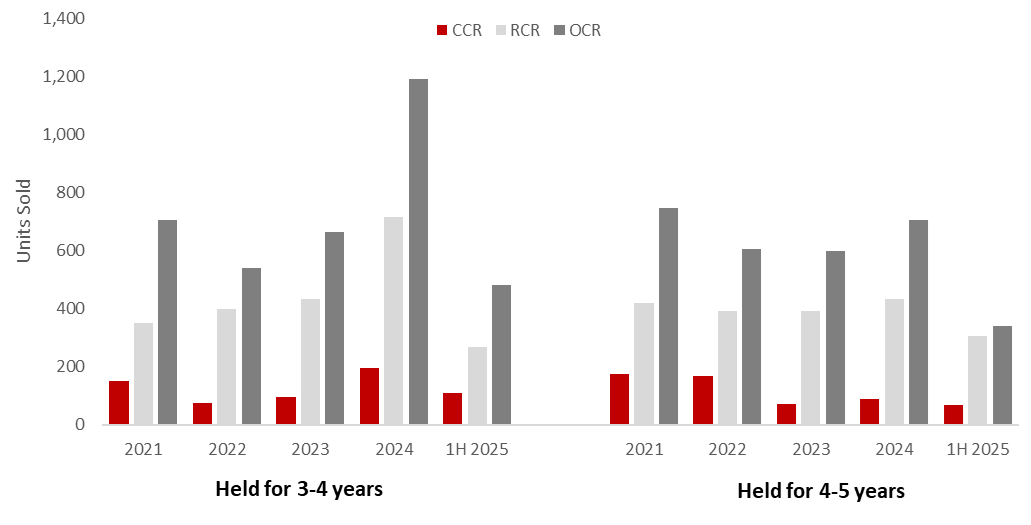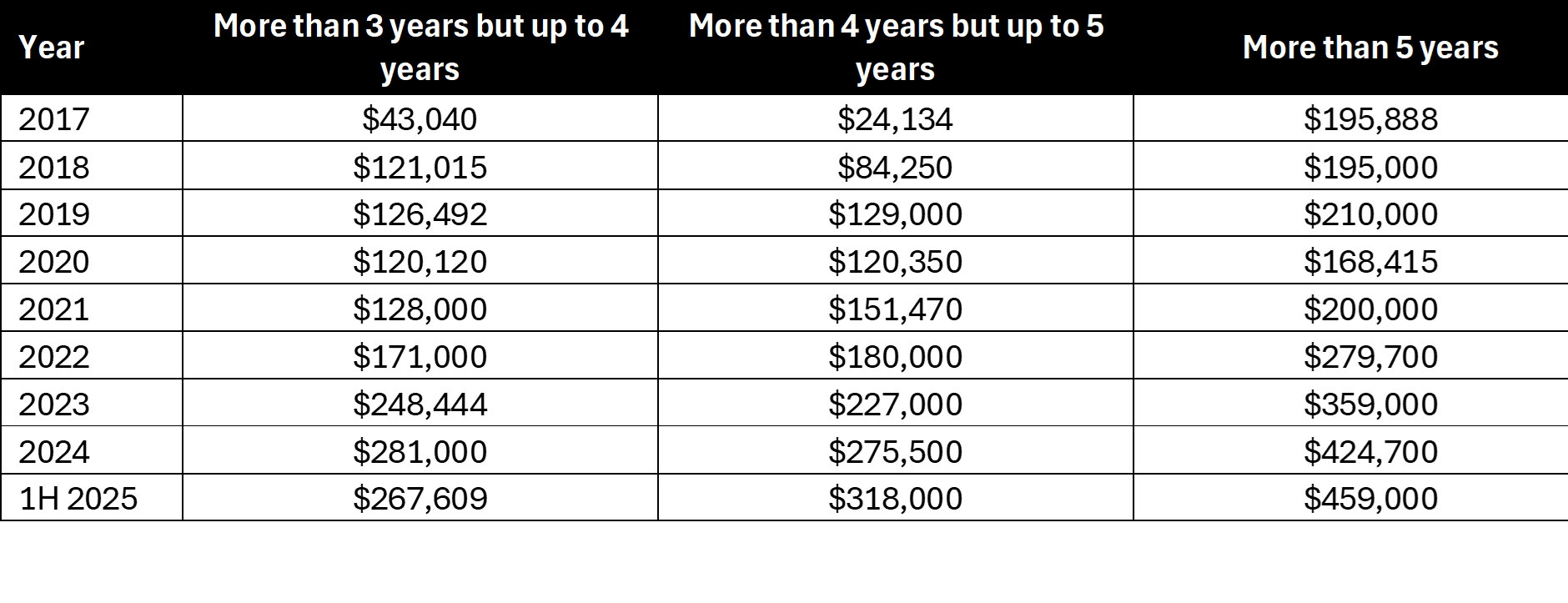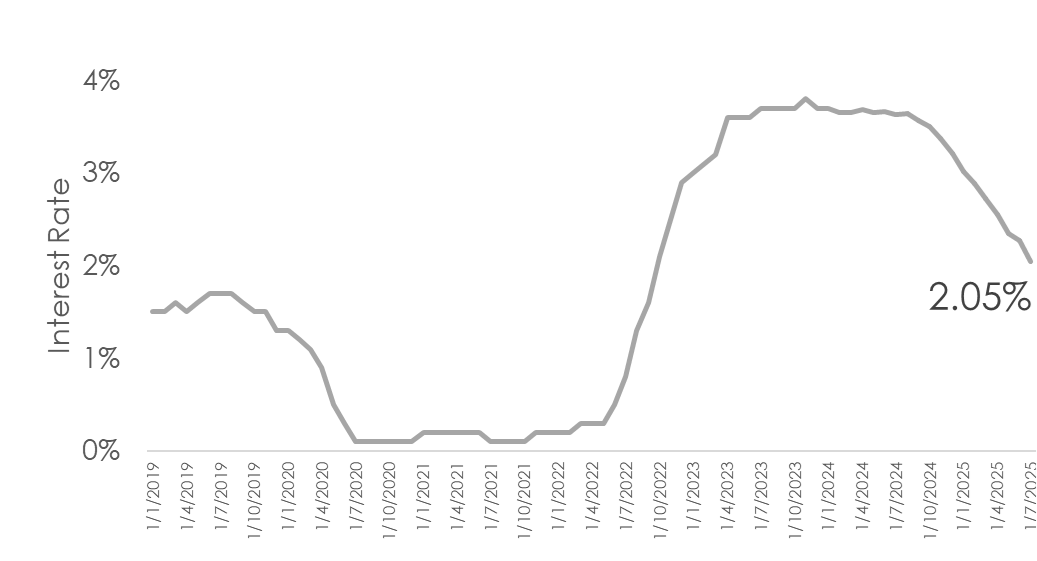The Government has announced two changes to the Seller’s Stamp Duty (SSD) for residential properties:
- An increase in the holding period from three to four years, and
- Increase of the SSD rates by four percentage points for each tier of the holding period.
These changes will take effect for all residential properties purchased on and after 4 July 2025, 12.00am. The revised SSD will not affect HDB owners due to the Minimum Occupation Period for HDB flats.
This reversion to the pre-2017 SSD holding period of four years aims to reduce speculative demand by lowering the number of sellers who flip their homes after just three years.
According to IRAS, the SSD of a residential property is payable for properties acquired after 20 Feb 2010. In most instances, the date of purchase/ acquisition of a property refers to:
- Date of Acceptance of the Option to Purchase* or
- Date of Sale and Purchase Agreement or
- Date of Agreement for Lease (for new HDB flat) or
- Date of transfer to a beneficiary where the property was originally held on trust for non-identifiable beneficial owner(s) or
- Date of Transfer where the above (a), (b), (c) and (d) are not applicable
*Excludes an Option to Purchase that is subject to the execution/ signing of the Sale and Purchase Agreement
These adjustments to the SSD framework will help reduce speculative activity, although they will affect only a small minority of buyers. We welcome the changes and believe they will complement broader measures, such as increasing land supply, to foster a sustainable market.
Since most homebuyers are genuine owner-occupiers or longer-term investors, this measure is a gentle touch rather than a heavy-handed approach on the overall market. It aims to stabilise any spikes caused by short-term investors. It is not designed to crack down on the market but to reduce the froth from investors who sell shortly after the third year.
Notably, the elevated interest rates since September 2022 have eroded meaningful profits for property investors, which may have led them to extend their holding periods, especially now that interest rates have eased in recent months.
The property tax revisions introduced in 2023 have also resulted in higher taxes on non-owner-occupied residential properties, which may have contributed to this trend as well.
"Investors have shifted towards a medium- to long-term holding strategy to increase rental income while waiting for prices to reach their preferred levels before selling. This requires greater endurance, but most now have that capacity and plan their exit strategies accordingly,” said Marcus Chu, Chief Executive Officer, ERA Singapore.
Table 1: Seller Stamp Duty Schedule

Source: MND, MOF, MAS, ERA Research and Market Intelligence
While more owners are selling after holding their homes for three to four years in recent years, they remain a minority.
There has been a significant jump in sellers who sold their homes after holding them for more than 3 years, but up to 4 years since 2021. Looking at URA caveats, in 2020, only 358 sellers sold their non-landed homes after holding them for three to four years. But by 2024, this number had surged to a peak of 2,104 sellers. In 1H 2025, sellers who sold their non-landed homes after holding for more than 3 years but up to 4 years merely accounted for 858 transactions or 14.7% of the transactions.
Despite this increase, most homeowners continue to sell their homes only after holding their properties for five years or more. In 1H 2025, about 72.1% of homeowners sold their homes after five years. This trend is further supported by SingStat data, which shows that the proportion of owner-occupied residential households remained high at 90.8% in 2024.
Table 2: Breakdown of Non-landed private homes sold by holding period

Source: URA, ERA Research and Market Intelligence
Outside Central Region saw the highest volume of homeowners selling within 3-4 years
Among the regions, the Outside Central Region (OCR) saw the highest volume of homeowners selling within 3-4 years, followed by the Rest of Central Region (RCR) and Core Central Region (CCR). This could be largely due to the more palatable price quantum of OCR homes compared to the other regions.
Chart 1: Breakdown of Non-landed private homes sold by Market Segment

Source: URA, ERA Research and Market Intelligence
Higher interest rates and property tax saw more investors extending their holding periods despite significant profits
Looking at the median gross profitability of non-landed homes by holding period shows that while there are significant profits to be made after holding for three to five years, sellers who held their properties for more than five years saw the highest profitability.
Table 3: Median Gross Profitability of Non-landed private homes sold by holding period

Source: URA, ERA Research and Market Intelligence
Notably, the elevated interest rates since September 2022 have eroded meaningful profits for property investors, which may have led them to extend their holding periods, especially now that interest rates have eased in recent months. The property tax revisions introduced in 2023 have also resulted in higher taxes on non-owner-occupied residential properties, which may have contributed to this trend as well.
Chart : 3-month Compound SORA

Source: MAS, ERA Research and Market Intelligence
In conclusion
With the higher Additional Buyer’s Stamp Duty tiers introduced in April 2023, the residential landscape has shifted largely towards domestic and owner-occupier demand. Coupled with heightened economic uncertainty in recent months, buyers have become more prudent, and more are viewing property as a long-term investment. We are likely to see property investors, who often buy and sell their units within three years, to be most impacted by this move. However, the majority of homebuyers, who are owner-occupiers, are unlikely to be affected by this change.
ERA welcomes the tweaks to the SSD and expect the impact to be marginal on the overall market given demand is largely from owner occupiers. The SSD revision will work in tandem with other policies, such as the increased land supply to support a more sustainable and stable housing landscape.
I confirm that I have read theprivacy policyand allow my information to be shared with this agent who may contact me later.
